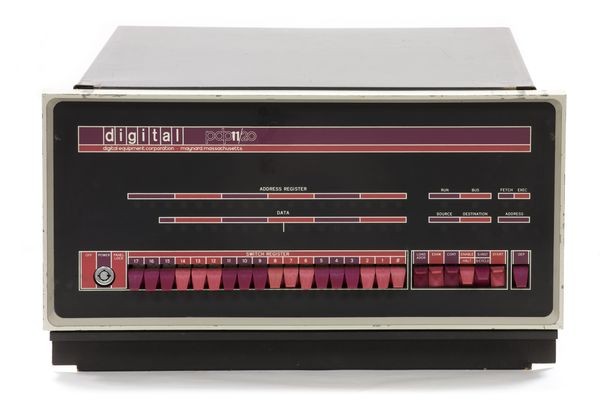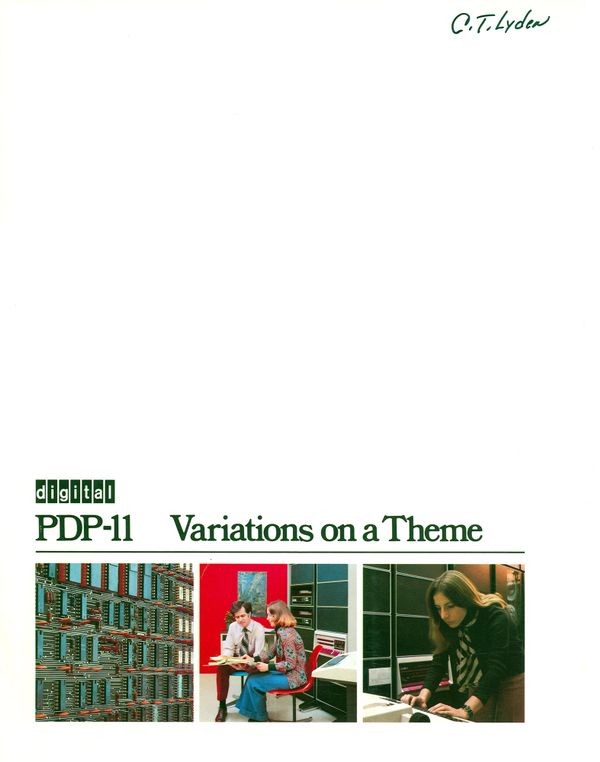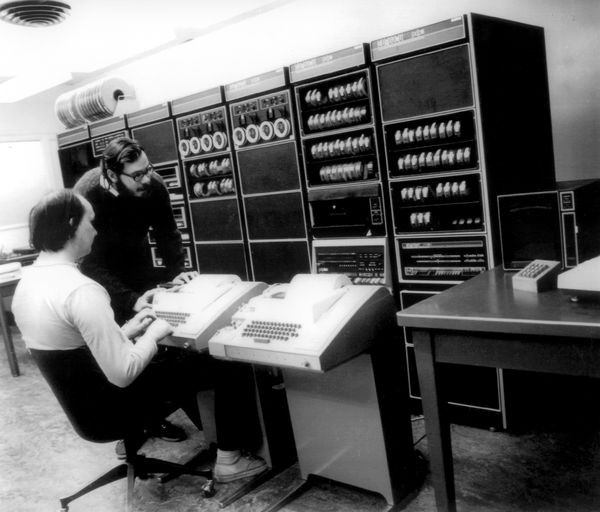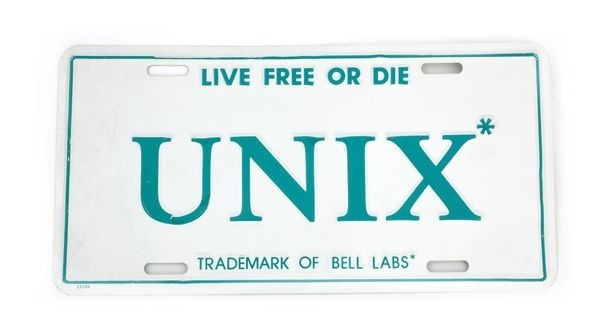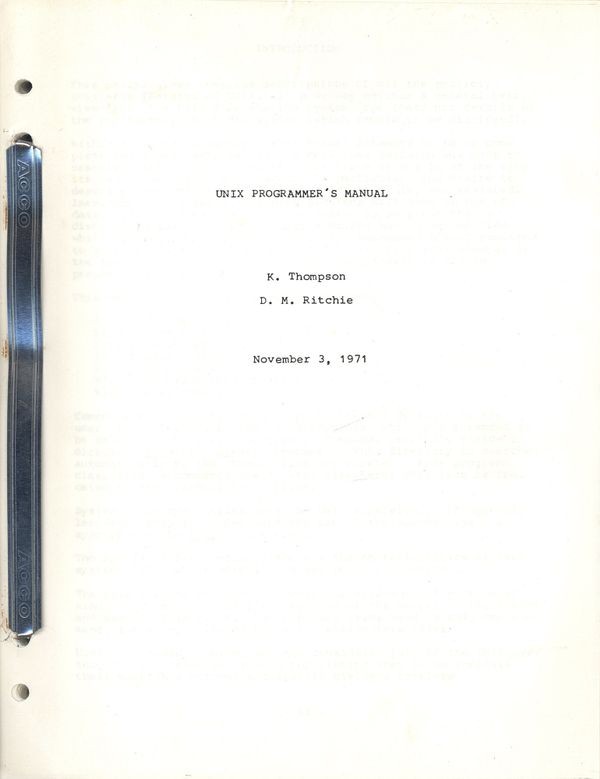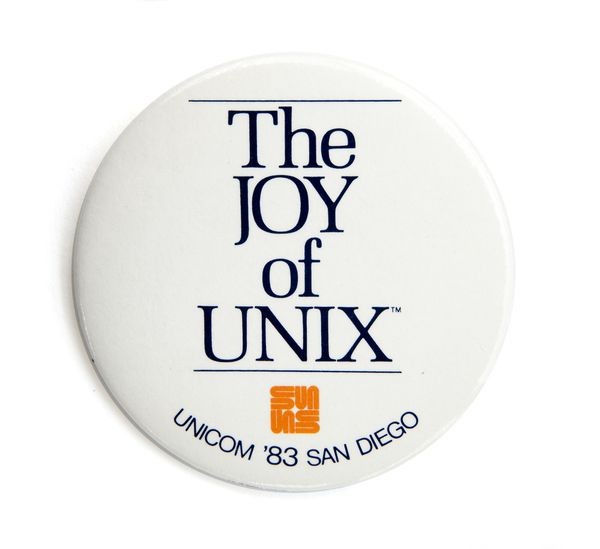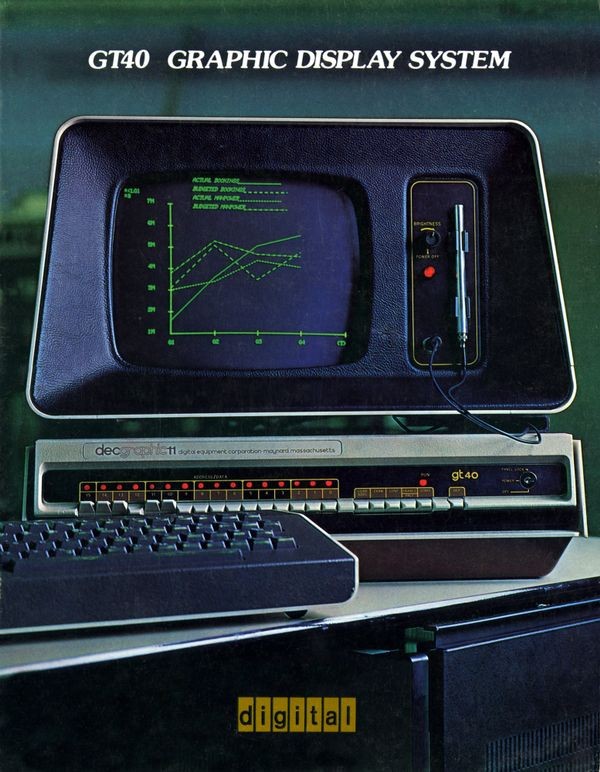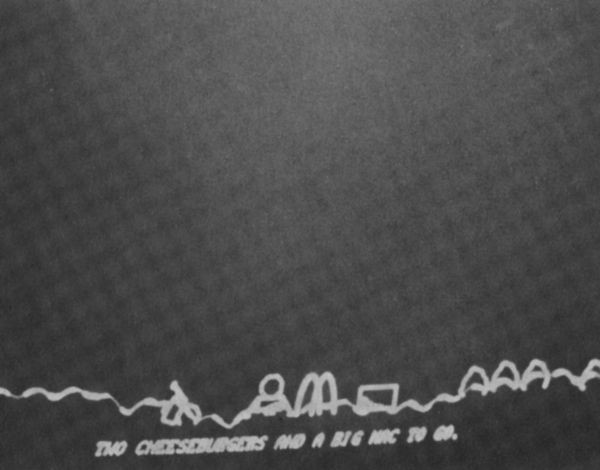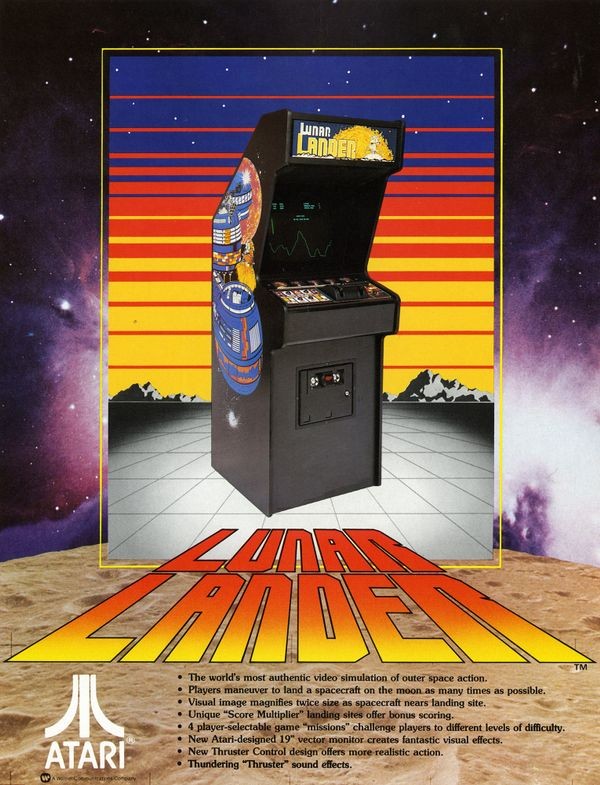DEC’s Minis Get Bigger
PDP-11/20
All models of the PDP-11 family could run the same software. Its clean internal architecture, with multiple general-purpose internal registers, was more like a mainframe computer than earlier minicomputers.
DEC’s Minis Get Bigger
DEC’s low-cost 12-bit PDP-8 computer line was groundbreaking. But it was being leap-frogged by 16-bit machines from competitors such as Honeywell, Data General, Hewlett-Packard, and a host of startups.
DEC responded successfully with family of 16-bit computers, starting with the PDP-11/20, introduced in 1970 for $10,800.
PDP-11 and the Atex System
Atex pioneered computer technology for newspaper publishing. Founded in 1973, the company used modified PDP-11s and special terminals to edit and produce publications such as The New York Times, Time Magazine and U.S. News and World Report.
View Artifact DetailPDP-11 product line brochure
This brochure shows the progress made in developing the PDP-11 product line from the initial announcement in 1970 to six computer models and five operating systems by 1977.
View Artifact DetailA Universal Operating System
The elegant and flexible Unix operating system sprang from Multics, a complex time-sharing operating system developed at MIT in the 1960s.
When Bell Labs withdrew from the Multics project, Ken Thompson, Dennis Ritchie, and other Bell researchers decided to create a similar but simpler system for smaller computers. The result was Unix.
After initial experiments on an unused PDP-7, the team moved it to a PDP-11, then rewrote it in the C programming language. Bell Labs freely licensed Unix, which was easily ported to other computers and spread swiftly.
Ken Thompson and Dennis Ritchie
Ritchie (standing) and Thompson work on Unix at a PDP-11/20 at Bell Labs.
View Artifact DetailUNIX license plate
Digital Equipment Corporation distributed thousands of these Unix license plates as giveaways.
View Artifact DetailUnix programmer's manual for Bell Labs users
Ritchie and Thompson called their new operating system Unics—later Unix—because it was smaller and simpler than the Multics system they had worked on at MIT.
View Artifact DetailJOY of UNIX button
The button was produced for a 1983 Unix technical conference.
View Artifact DetailSelling Graphics with Games
DEC’s nifty new GT-40 graphical display terminal, designed for serious business and scientific applications, needed a flashy demonstration program. Why not a game?
Programmer Jack Burness’s “Lunar Lander” simulated landing a spacecraft on the moon. It became wildly popular, and was later recreated as an Atari arcade game.
GT-40 brochure cover
Controlled by a PDP-11 minicomputer, this vector graphic display terminal could display both text and graphics, including upper and lower case. It’s built-in light pen allowed users to interact with the displayed information. It was popular with with graphics researchers, designers and engineers who needed a low-cost graphics terminal.
View Artifact DetailLunar Lander screenshot
Lunar Lander was supplied by DEC as a graphics demonstration program. The player pointed a light pen on the screen. If the mission succeeded the player could land near the golden arches of a famous fast food chain. Here the player orders "two cheeseburgers and a Big Mac to go."
View Artifact DetailLunar Lander advertisement
Lunar Lander was the first Atari arcade game to use a vector-drawing display. It was quickly followed by Asteroids, a huge success.
View Artifact Detail